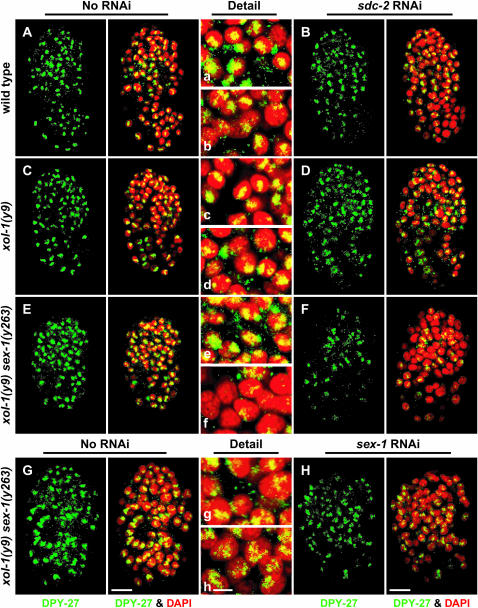Figure 3.—
X chromosome localization of the DCC is disrupted by inhibiting the XSE-independent function of sex-1. (A–H) Partial projections of false-colored confocal images of wild-type and mutant XX embryos costained with antibodies against the dosage compensation protein DPY-27 (green) and DAPI (red). (a–h) Enlargements of nuclei from A–H, respectively. (A–D) RNAi treatment of sdc-2 in wild-type and xol-1 mutant embryos mildly disrupted the X localization of DPY-27, as indicated by reduced DPY-27 levels and diffuse nuclear localization. (E and F) RNAi of sdc-2 disrupted DPY-27 more severely in xol-1 sex-1 mutants than in either wild-type or xol-1 animals, indicating that the XSE-independent function of sex-1 is important for proper stability and assembly of the DCC on X. (G and H) RNAi of sex-1 in xol-1 sex-1 XX embryos disrupts DPY-27 localization, indicating that loss of only the XSE-independent function of sex-1 impairs dosage compensation. Bars (A–H), 10 μm; (a–h), 3 μm.

